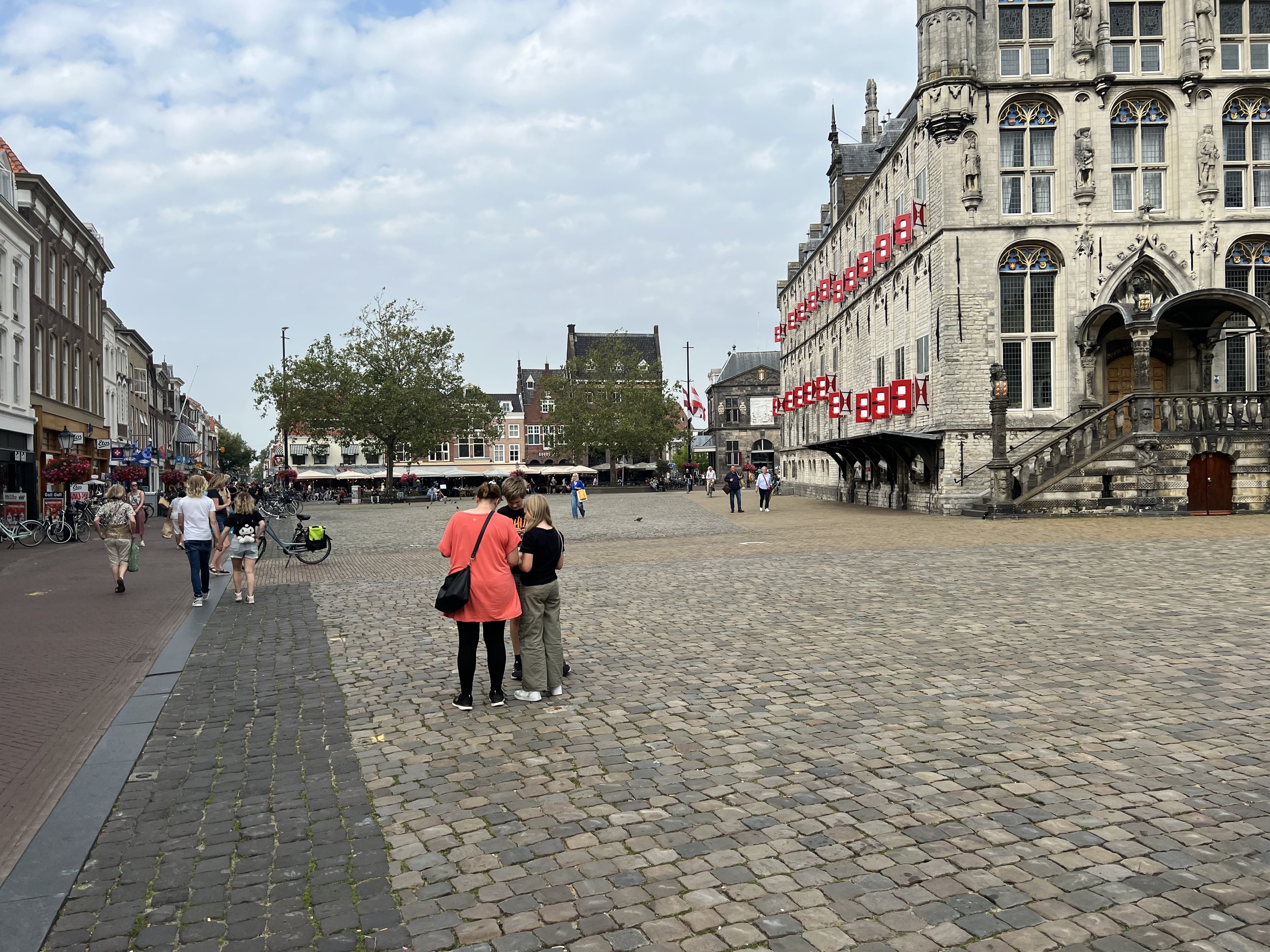YouTube Series: LOOKING FOR THE PERFECT STREET
18 SEPTEMBER 2023
It's easy to overlook the importance of well-designed streets. We shouldn’t be doing that. A great street is the ultimate work of architecture.
Many architects and planners tend to compartmentalize building design, traffic, utilities, public safety, and planning issues, separately without understanding the whole.
The author Allan B. Jacobs, in his book ‘Great Streets’, takes a different viewpoint— he makes the following comment:
In the building and rebuilding of cities, there seem to have been relatively few times when the major concentration of design efforts has been on the streets; not on the city-wide pattern of the streets or the laying-out of whole areas, but on the functional-sensual arrangement of the streets themselves— their sizes, the detailed design of all of their parts, and their embellishments in the contexts of their particular city.
The significance of the street is a fundamental element of urban design, and as such, cannot be underestimated.
As an Architect, I confess that I come from a group that could be considered to have some distain for the street- It’s there for practical purposes, but sometimes its constraints seem to impinge on what I am trying to do with my project. For what is going on a block or two away from my site seems to have little to do with my endeavor.
But after years of observation and study, I've come to realize that a street is more than just a collection of buildings and other things. It's actually a work of architecture in and of itself.
When we fail to recognize the whole of this notion, and make all the pieces work as a whole, we end up with bad streets. Bad streets are those where some or all of the functions assigned to the street don't work together, resulting in a environment that is un-loveable, poorly functioning, or even dangerous.
These streets are not conducive to civic life, and people on these streets are suspicious of each other. Even if it happens incidentally, they're no place for commerce, they're ugly, and people want to get through quickly and leave as soon as possible.
STREETS AS ARCHITECTURE
FIRMITAS, UTILITAS, AND VENUSTAS
Commodity, firmness, and delight
A bad street lacks some or all of these three Vitruvian principals. A bad street does not suit the needs and aspirations of the people who use it.
And a city full of bad streets is a bad city, despite all the individual things that are good things for a city to have.
I alway wanted my own projects to contribute to the street, the neighborhood, and to the city as a whole. To my disappointment, sometimes these projects made very little contribution.
Over time, I recognized this as a great frustration for me
Many times we have constructed buildings only to see them brought down by their surroundings, or conversely, our work has been insufficient to uplift its surroundings.
Over time, I had to acknowledge the importance of the street, and the things that streets do— the world outside of our building had to be taken into account
Streets are Functional and necessary, but mostly only taken into account for practical reasons, with the larger design dialog forgotten by many designers, including me
Every new or reworked building Has the power to lift up - not just the individual work of architecture I’m working on - but especially the greater whole of the environment that it will exist in.
Over time, This forced my design process to take into account a larger context. Wittingly or not, my design was, by necessity, part of a greater endeavor.
Examples of good streets can be found all around the world. The "Great Streets," book describes numerous examples that we can learn from. Examples that are vibrant urban spaces, and are works of Architecture in the best sense. Inspiration to strive to create our own great streets.
This is coming from an Architects point-of-view. So naturally I need to give you some examples of special buildings that are great on their own, but also aware of their surroundings. They all provide the Transition, Building Design, and Contribution to the street that we are looking for.
The Lever House elegantly and effortlessly builds out the city block, yet brings in its visitors
Gugenheim Bilbao provides a jewel-like counterpoint to the old city fabric
The Poetry Museum’s entry sequence takes someone from the noisy city to a state of contemplation
La Pedrera is outstanding in so many ways, but the entry through the courtyard is thrilling
Belnord Apartments central courtyard is spectacular in its scale. It’s the backdrop to the TV series Only Murders in the Building
As a contributor to urban design, my goal is to create not just individual projects, but great streets that enrich the lives of those who use them. I don’t think of the special streets of the world, as places with an exclusive design language that just makes them tourist attractions.
Rather, they are works of architecture, to inspire the design of any street, grand or intimate.
If we look around the world, surveying the great cities, one of the things that gives us immeasurable pleasure are streets that awe and inspire us. As an architect, I can’t separate myself from that. The work I do is inextricably tied in with the reality of however good or bad as the street is.
Here’s a link to my video:

